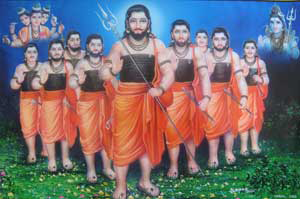
The mudras of hatha yoga
We find the first written records of the mudras of Hatha Yoga in the Hatha Yoga Pradipika (Pradipikal means the "little lamp of yoga") and in the Gheranda Samita (the collected teachings of the sage Gheranda). Ten mudras are discussed in the first work and 15 more in the second, making a total of 25 mudras. According to these writings, the effects of the mudras extend from healing everyday complaints to maintaining youthful freshness at a ripe old age, to even determining one's own day of death. However, many yoga masters think that these promises should not be taken too literally. They say these are superficial explanations for non-initiates. The deeper aspects of the mudras are only revealed to those who seriously practice them through the guidance of a teacher.
Classical mudras are mainly used for awakening kundalini, experiencing states of expanded consciousness, or achieving enlightenment. Since such practices are like a tightrope walk and accordingly dangerous, they can only be learned with an experienced teacher. The way in which I use the mudras in daily life and present them here, they primarily serve the health of body, mind, and soul. This is reason enough for me to practice them.
Swami Satyananda Saraswati, a recognized Hindu yoga master, was the first to describe them so that even we normal mortals can do them. He also gives the advice of practicing the mudras in combination with body postures (asanas) and breathing exercises (pranayamas) since this will considerably intensify the body and breathing work. Mudras are also the ideal preparation for meditation. Today, other directions such as Power Yoga and Kundalini Yoga, agree with his opinion.

